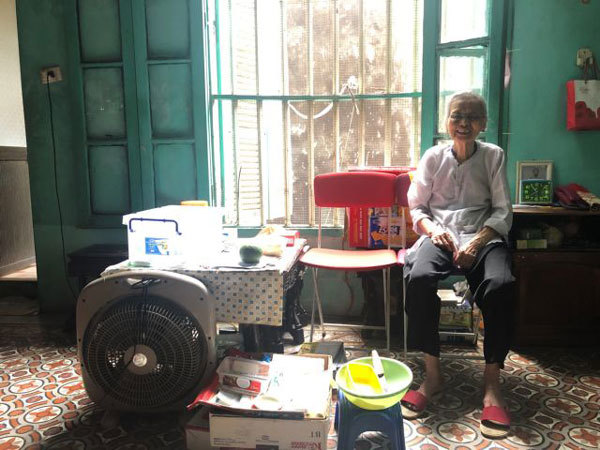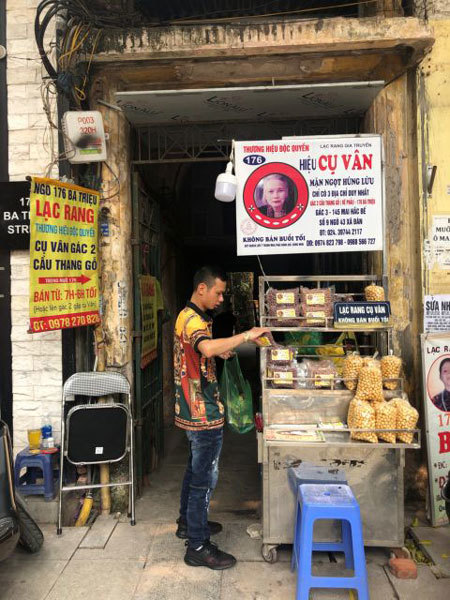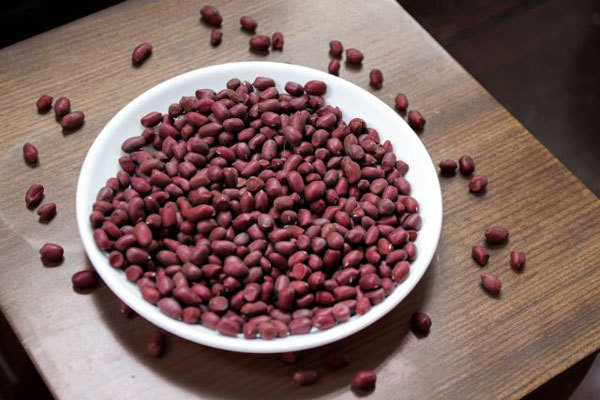Snacks market in VN worth $500 million
Vietnamese spend $354m on snacks
Cashew companies to step back in 2018 before gearing up again later
 |
| Van at her home in Hanoi. Photo Van Thi Minh Hien |
Hung liu (or lìu powder) is a mixture of cinnamon, star anise, cardamom and cloves. It is widely used in Vietnamese cuisine, particularly in roasted peanuts.
“Although nuts are common in my homeland, many of my friends and relatives tell me to buy roasted peanuts with húng lìu on Hanoi’s Ba Trieu Street,” Thang said, noting that he has eaten the snack several times.
He told me that I should buy the peanuts with the trademark Cu Van because she is one of most famous producers in the capital.
Packs of nuts are available all along Ba Trieu Street. Although I was a Hanoian, I was very confused about which stand was truly Cu Van’s because almost every one was named Ba Van or Cu Van.
I asked one of my friends who lived on the same street as elderly Van.
She led me to the true Cu Van at her home No. 176.
A lovely 90-year-old woman welcomed us and told us a story: “My full name is Bui Thi Van. We have made these nuts for five generations.”
 |
| A customer from Sai Gon says he has been trying to find Cu Van's lac rang hung liu to bring home as gift for his relatives and friends. Photo Van Thi Minh Hien |
In the early 1920s the snack was commonly sold by street vendors, many of them elderly Chinese men.
“The work came to us by chance. My husband had a close Chinese friend who sympathised with us as at that time we had no regular job to earn money to raise our children, he agreed to teach us how to make the nuts.”
The important step is to choose quality nuts.
“We only buy the light pink nuts from Bac Ninh and Bac Giang provinces and red nuts in Nam Dinh’s Hai Hau District. The nuts should be dried under the sun. All low quality nuts have to be removed before being roasted.”
Van said the process of soaking the nuts in lìu powder (salted or sweet) is the most important step because it is very difficult. Van has only handed down the technique to her elderly son, daughter in-law and her grandson.
“We have many employees working for us but only the three mentioned are allowed to use the technique. After soaking the nuts in lìu powder we have to stir them regularly for an hour and then dry them,” she said, adding that the process of roasting the nuts should be done very carefully to avoid them burning.
 |
| Red groundnuts from Nam Dinh Province are chosen to make lạc rang húng lìu. Photo Hoang Ho |
Thanked to her job, despite being surrounded by many fake Cu Van or Ba Van stands, her item sells very well thanks to its aromatic flavor and can be kept for a month although it has no preservatives.
“I had to register my trademark Cu Van with the State Intellectual Property Department and my items are recognised as safe,” she said.
Some customers even visit her stall late at night, seeking her tasty nuts.
The item is also a good ingredient to make salad or particularly to sip with a cup of traditional wine known as rượu cuốc lủi, the elderly woman said.
“I don’t know why gourmets know about my nuts. They not only try to find to my home and my phone number but also know about me and my job,” she said, adding that a lot of foreign tourists and travelers also come to buy the items at her stand every day.
Despite her old age, Van still manages to keep her eyes on the business.
The woman said she is very happy because she has successfully handed down the job to her children.
I was happy too because I bought 25kg of quality lạc rang húng lìu, both salted and sweet items for Thang who told me that he was very glad to have the specialty as gift for his friends and relatives.
VNS
 Visiting the capital, Ho Ngoc Thang, 55, from Nghe An Province’s Quynh Luu District, asked me to buy lạc rang húng lìu, a famous specialty of Hanoi, for him to give to his relatives.
Visiting the capital, Ho Ngoc Thang, 55, from Nghe An Province’s Quynh Luu District, asked me to buy lạc rang húng lìu, a famous specialty of Hanoi, for him to give to his relatives.